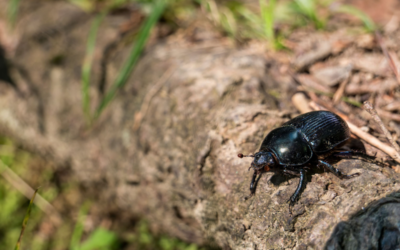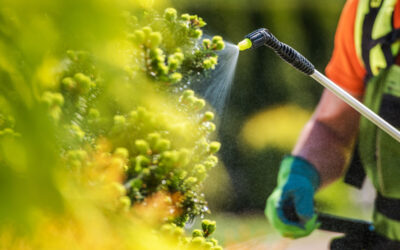The Germans have a word for it: Herbstlaubtrittvergnügen. It’s the joy of jumping into a big pile of raked-up leaves. It’s a great childhood memory for those of us who grew up in areas with lots of deciduous trees. It was often followed by the distinct aroma of leaves burning throughout the neighborhood. And the occasional sound of fire trucks rushing to keep the fires from spreading.
Most places ban leaf burning now, and that’s probably a good thing. Besides being risky, it adds to air pollution. Plus, it’s a waste of good, free gardening material.
So rather than burning or sending them to the landfill, here are some ways to put those leaves to work for you.
Mow and Leave Them
Shredded leaves and grass clippings will decompose over the winter, adding nutrients and amendments to the soil, giving your lawn a early spring head start. Mulching mowers are bagless and leave the clippings and shredded leaves on the ground. If you have a mower with a bag, simply remove it and aim the discharge into the lawn. Set the blade height to around 3 inches and take care that any hard debris that may be hurled out lands safely on the lawn instead of flying through a window or hitting a bystander. You may need to make a second pass if there are a lot of large leaf fragments remaining, and if the cuttings are more than ¾ of an inch deep, remove some of it to use elsewhere, as noted below.
Mow and Bag Them
Bags full of clippings and shredded leaves have many uses in your landscape. They can be used as mulch, insulation, and compost.
- Leaf mulch: Both shredded and whole leaves make a nutritious mulch for gardens and other plantings such as shrubs trees. Shredded leaves will decompose faster, and even if you don’t have a mower, you can put them in a large trash container and use a string trimmer to chop them up. Then work them into the soil in the spring to add organic material and nutrients in.
- Insulation: If you have lots of leaves gathered, they can be used to help winter-hardy container plants overwinter better. Once the plants go dormant, gather the containers together in a sheltered spot and cover them with a thick blanket of leaves. Add extra wind protection with an open mesh enclosure. If you have clay or stone containers, keep them free of water to prevent cracking during freeze-thaw cycles.
- Compost: Dried leaves add carbon to compost piles and help prevent unwanted rotting odors while scrap organic matter decomposes. If you have a lot of leaves, keep them in a separate pile and turn them into the compost frequently to keep the process going. If you don’t have a compost pile, you can collect whole or shredded leaves in a wire bin where you can keep them wet and turn them occasionally to make rich, black leaf mold to add to your soils in the spring.
Don’t Let Your Leaves Go to Waste
There are too many ways to use your fall leaves to overlook them. Whether for mulch, compost, or insulation, putting your leaves to work adds nutrients to soil, adds beneficial microbes, and improves its ability to hold water and oxygen. Plus they’re free.
Donovan Arborists seasonal tree trimming and shrub shearing services in the Denver area. If you don’t need the by-products for your own landscape, we’ll remove and recycle them for use elsewhere. We’re happy to give free estimates to homeowners and property managers for any services they may need. And if you want to start your own composting, here’s an article on Houzz.com to help you get started.




